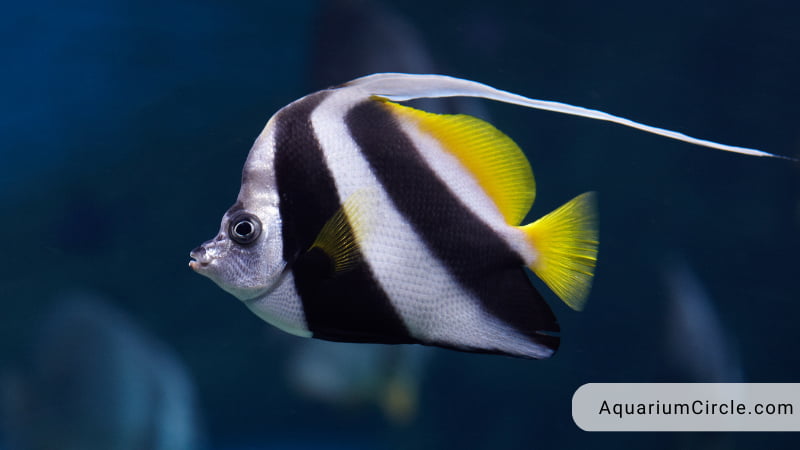Angelfish are one of the most popular aquarium fish species worldwide due to their graceful swimming style, striking colors, and unique body shape. Angelfish come in a wide range of colors, patterns, and sizes; each angelfish type has its own unique characteristics and requirements, making them a favorite among hobbyists looking to diversify their tank collection.
In this blog post, we will explore some of the most common and rare angelfish types, their distinct features, and how to properly care for them to ensure a healthy and thriving aquatic environment. Whether you’re a beginner or an experienced aquarist, learning about different angelfish types can help you choose the right fish for your tank and provide an exciting and colorful addition to your underwater world.
See also:
- Are Dwarf Angelfish Reef Safe? Top 7 Best Dwarf Angelfish For Reef Tank (with Picture)
- Do Angelfish Get Lonely? – 3 Things You Need To Know
- Altum Angelfish Care Guide: Lifespan, Size, Tank Size & Setup, Water Parameters, Breeding & More
Zebra Angelfish
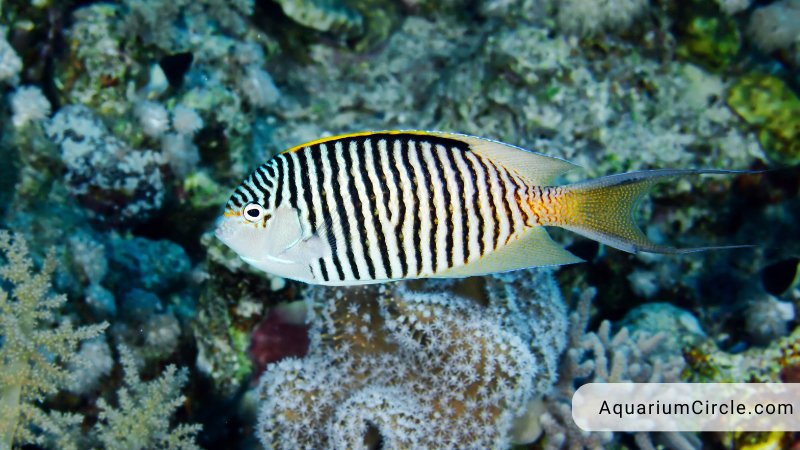
The first angelfish we’re discussing is the Zebra angelfish. This is because most people who raise angelfish have one or two of this kind in their tank.
If properly maintained, the Zebra can grow to be 10 inches long. Male and female appearances will differ. If you decide to purchase some of these species, you will need a suitable tank.
A 30-gallon aquarium is recommended for groups of six or more. This is due to the fact that they spend most of their time swimming around. A smaller tank could make them feel uncomfortable.
Be careful to build up a warm water environment that mimics their native home.
Marble Angelfish
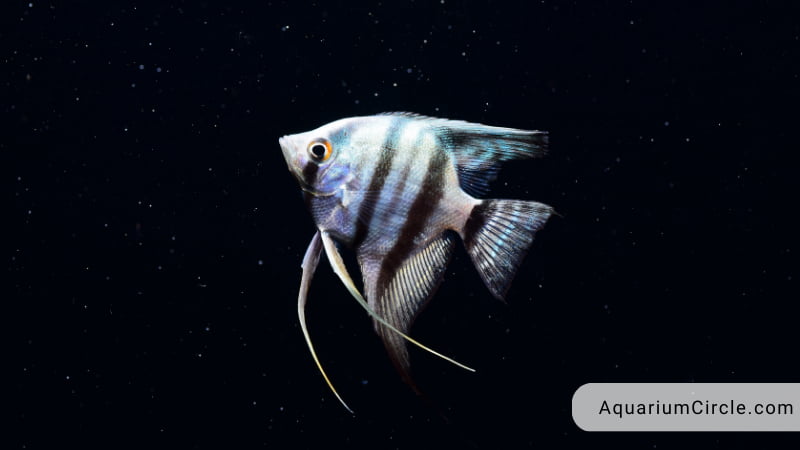
The Marble Angelfish shares some similarities with the Zebra Angelfish, as they both prefer warm water environments. However, the Marble Angelfish has a unique marbled pattern that includes black, white, and yellow coloring, which gives it its name. To ensure their optimal health and well-being, it is recommended to maintain a slightly acidic water environment within a 30-gallon fish tank, especially when keeping a group of five or more Marbles. This will help them thrive and maintain their vibrant coloring.
Black Veil Angelfish
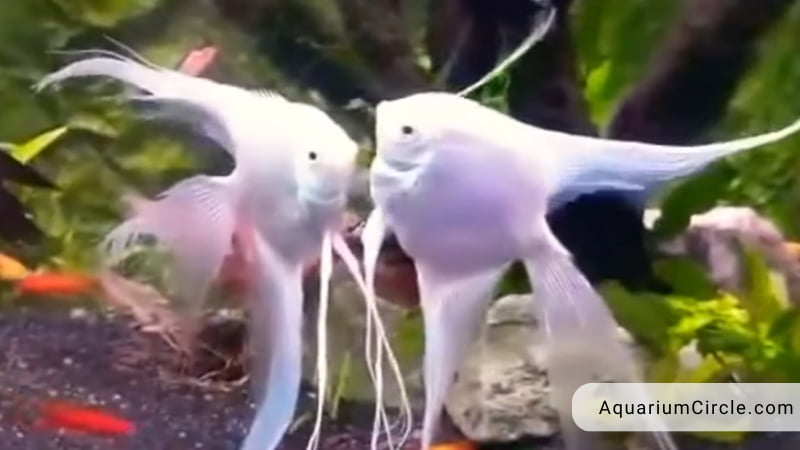
The Black Veil Angelfish, also known as Veil Angelfish, has been selectively bred for over 40 years to achieve its distinct black coloration. It is important to note that these fish require a minimum of a 30-gallon fish tank, especially when keeping a pair of adults or larger groups. Additionally, the temperature of the water should be maintained between 76-84 degrees Fahrenheit. Those raised in captivity can tolerate a water pH level of up to 7.8. To keep Veil Angelfish happy, it is recommended to plant the aquarium with driftwood and rocks, providing them with hiding places and areas to explore.
Black Lace Angelfish
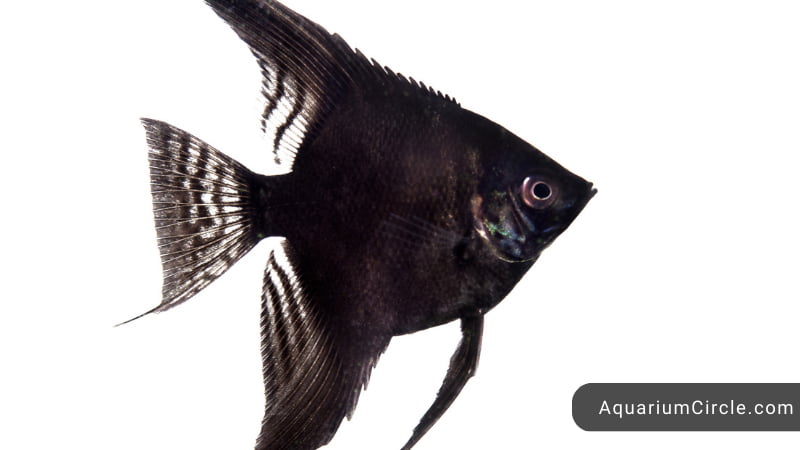
The Black Lace Angelfish is a calmer breed that prefers a peaceful and quiet environment. Unlike the previously mentioned angelfish types, this species is not an active swimmer. They prefer warm water environments, ranging between 75-82 degrees Fahrenheit, but to ensure their comfort in the tank, it is recommended to maintain the water at 78 degrees. When cared for properly, Black Lace Angelfish can grow up to over 6 inches in diameter and 14 inches tall.
Leopard Angelfish
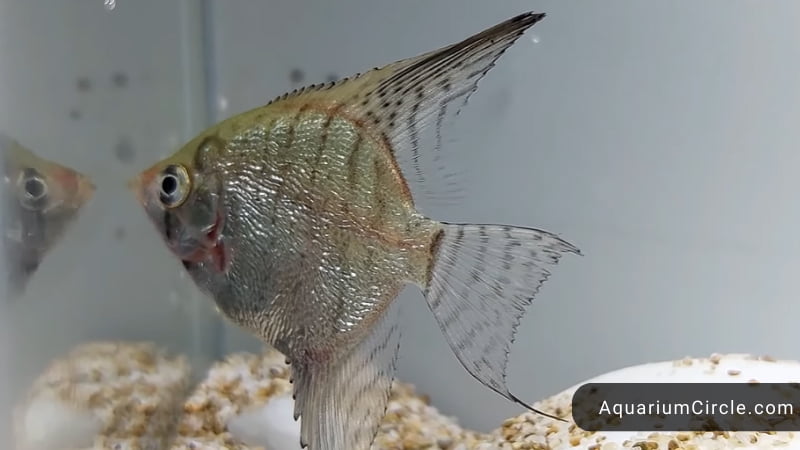
Leopard Angelfish, as the name suggests, feature a striking spotted pattern similar to that of a real leopard. This angelfish type was bred from an angelfish species found in the Amazon river with similar markings. To maintain their vivid coloring and patterns, it is crucial to maintain optimal tank conditions. In particular, adequate lighting is crucial for Leopard Angelfish as suboptimal lighting can quickly lead to a fading of their coloring and patterns.
Leopard Angelfish thrive in warm water environments, between 78-84 degrees Fahrenheit, with a slightly acidic pH level ranging from 6.0 to 7.0. These fish require a minimum of a 30-gallon tank to accommodate their size, and to allow them ample room to swim and explore. A well-planted tank with driftwood and rocks will provide hiding spots and create a comfortable environment for them.
Albino Angelfish
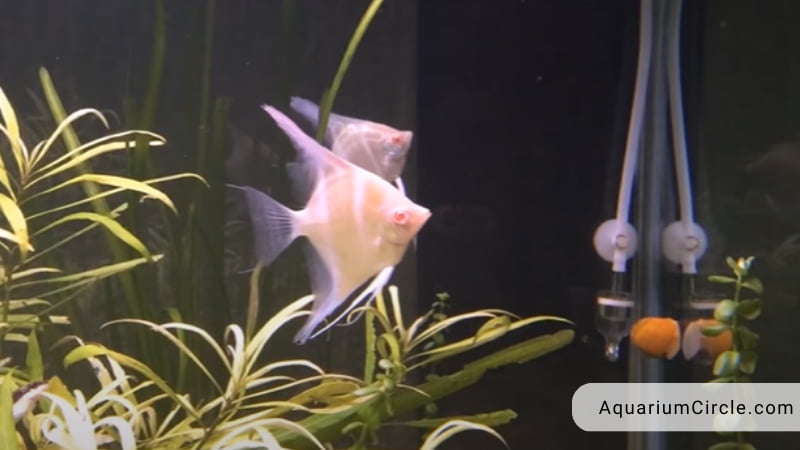
The Albino Angelfish is a type of angelfish that is selectively bred in aquariums, and is not found in the wild in this form. Their ancestors had a white and silver coloration with orange eyes and preferred living in areas with lots of plants and roots that provided protection from larger predators, as well as a source of food in the form of insect larvae and worms.
When keeping Albino Angelfish, it is best to house them with medium-sized fish, as they can become aggressive towards smaller fish and may ambush and eat them. Their feeding habits are relatively slow, and they can be fed a diet of both frozen and live food. However, it is essential to ensure that all fish receive an adequate share of food during feeding time.
Blushing Angelfish
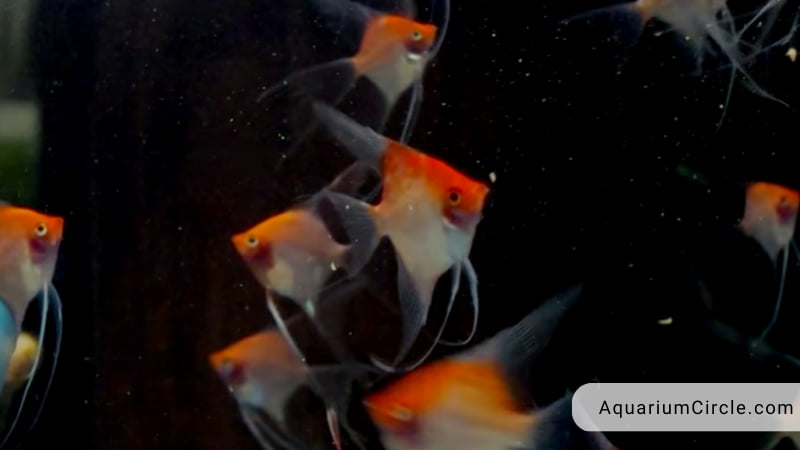
Unlike other angelfish breeds, the Blushing Angelfish has a unique coloration with only a pair of blushing cheeks visible on its body, and no other pigmentation present elsewhere. To ensure optimal health and well-being, the water conditions for Blushing Angelfish should be similar to those for other angelfish breeds discussed previously. The water temperature should be kept between 75-82 degrees Fahrenheit, and a slightly acidic pH level ranging from 6.0 to 7.0.
Blushing Angelfish are peaceful and can be kept in a community tank with other non-aggressive fish. They require a minimum of a 30-gallon tank and should be fed a varied diet of high-quality pellets, flakes, and frozen or live foods to ensure optimal health.
Smokey Angelfish
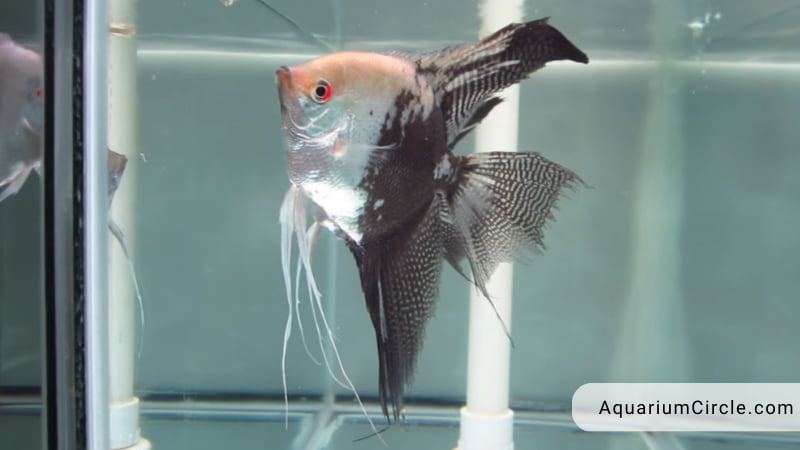
The Smokey Angelfish, as its name implies, is not the most colorful of the angelfish breeds. However, it is a stunning species nonetheless. Due to its darker pigmentation, the Smokey Angelfish displays intricate patterns all over its body, which can vary in intensity from total black to grey. These patterns are not symmetrical and can differ in appearance as the fish ages.
As the Smokey Angelfish matures, its dark pigmentation typically increases, and its patterns may even darken over time. To maintain their optimal health and well-being, Smokey Angelfish require a water temperature between 78-84 degrees Fahrenheit, with a slightly acidic pH level ranging from 6.0 to 7.0. They should be fed a varied diet of high-quality pellets, flakes, and frozen or live foods to ensure their optimal health.
Gold Angelfish
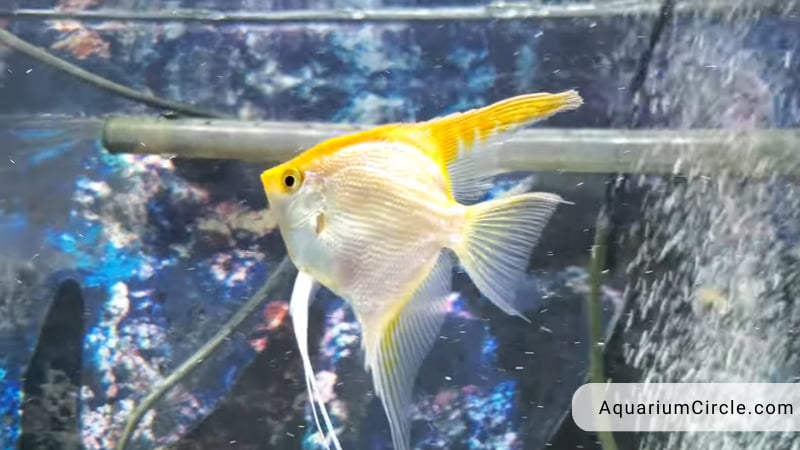
The Gold Angelfish is another type of Veil Angelfish with a stunning gold coloration, and is arguably one of the most beautiful fish discussed in this article. To ensure that they thrive in an aquarium, it is crucial to maintain water parameters at the recommended levels. For instance, the pH level should be maintained between 6.5 and 6.9, and the temperature should range between 76 and 84 degrees Fahrenheit.
Gold Angelfish originate from the Amazon river, and as such, require an aquarium with abundant vegetation, wood, and rocks. A well-planted tank with driftwood and rocks will provide hiding spots and create a comfortable environment for them. It is also recommended to keep Gold Angelfish in a tank with a minimum of 30-gallons to accommodate their size and to allow ample room for swimming and exploring.
Altum Angelfish
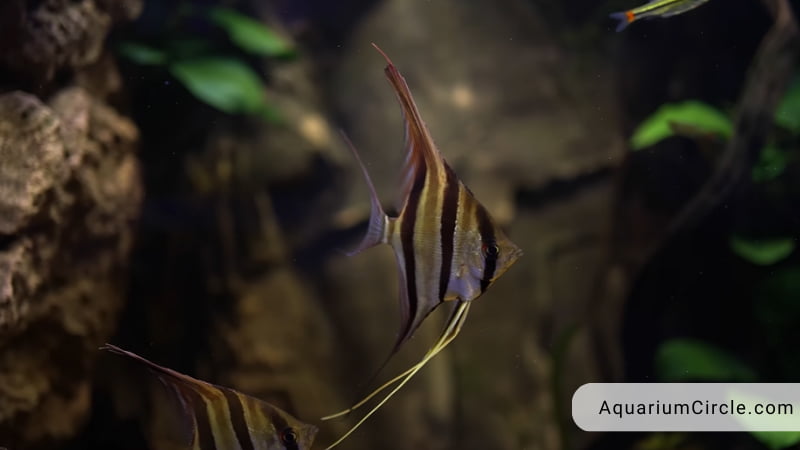
The Altum Angelfish is a more demanding breed of angelfish compared to the ones previously mentioned. This is due to their specific water requirements, which must be carefully maintained. To ensure their optimal health and well-being, it is crucial to maintain a higher water temperature between 82 to 90 degrees Fahrenheit.
In addition, the pH level of the water must be maintained between 4.8 and 6.2. This is especially important, as Altum Angelfish cannot thrive in less acidic conditions. It is also essential to keep the water hardness below 5. By following these guidelines, Altum Angelfish can live long and thrive happily in an aquarium.
Koi Angelfish
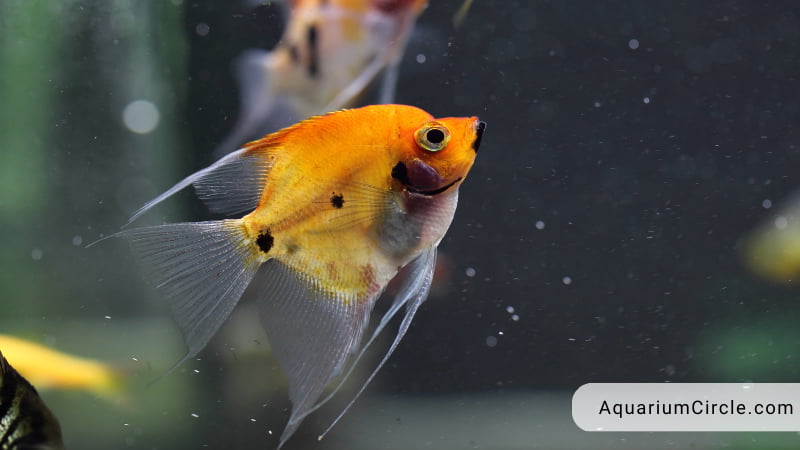
The Koi Angelfish shares some similarities with the Blushing and Gold Angelfish mentioned above, as it features a combination of white and gold coloration on its head and genes. These fish typically grow to an average size of 6 inches, regardless of gender.
Like other angelfish breeds, the Koi Angelfish is relatively low-maintenance and does not require excessive attention. Maintaining proper water conditions, such as temperature and pH levels, is easily achieved within the recommended range. A minimum of a 30-gallon tank is necessary to accommodate this breed, similar to the other angelfish types mentioned above.
Silver Angelfish
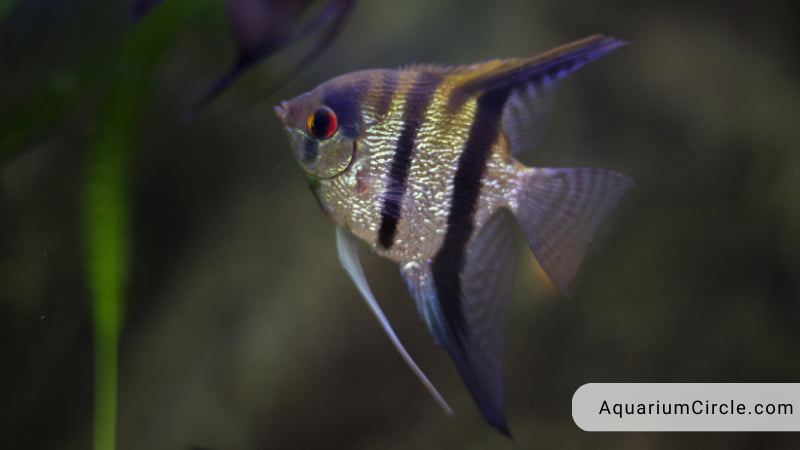
The Silver Angelfish is one of the most popular breeds of angelfish, making it a highly sought-after choice for aquarium enthusiasts. What sets them apart is the presence of three distinct stripes on their body: one through the eye and two others running through their body.
As their name implies, their coloration is predominantly silver. They are also among the most durable of angelfish breeds, making them an excellent choice for those new to fish keeping or aquarium enthusiasts who prefer low-maintenance fish.
Silver Angelfish require a minimum of a 30-gallon tank to accommodate their size and to allow ample room for swimming and exploring. To ensure their optimal health and well-being, it is recommended to maintain a water temperature between 78-84 degrees Fahrenheit, with a slightly acidic pH level ranging from 6.0 to 7.0. They should be fed a varied diet of high-quality pellets, flakes, and frozen or live foods.
Platinum Angelfish
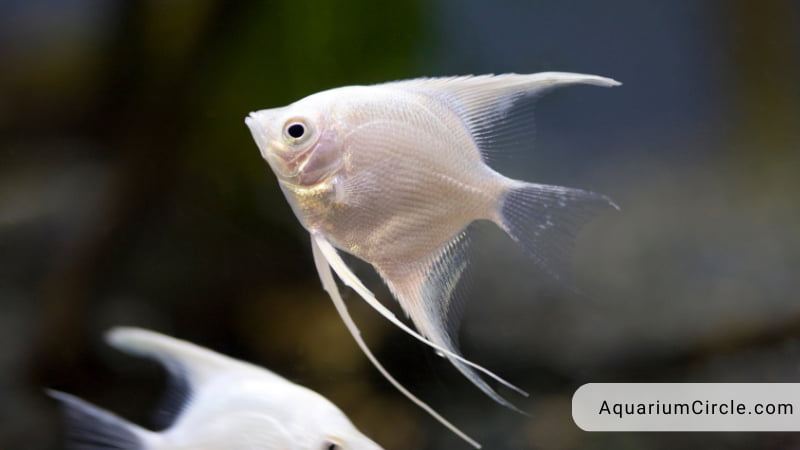
The Silver Angelfish is one of the most popular breeds of angelfish, making it a highly sought-after choice for aquarium enthusiasts. What sets them apart is the presence of three distinct stripes on their body: one through the eye and two others running through their body.
As their name implies, their coloration is predominantly silver. They are also among the most durable of angelfish breeds, making them an excellent choice for those new to fish keeping or aquarium enthusiasts who prefer low-maintenance fish.
Silver Angelfish require a minimum of a 30-gallon tank to accommodate their size and to allow ample room for swimming and exploring. To ensure their optimal health and well-being, it is recommended to maintain a water temperature between 78-84 degrees Fahrenheit, with a slightly acidic pH level ranging from 6.0 to 7.0. They should be fed a varied diet of high-quality pellets, flakes, and frozen or live foods.
Clown Angelfish
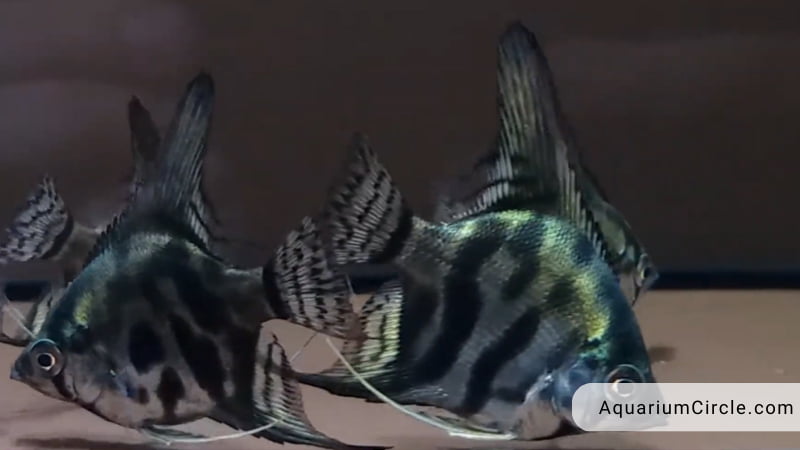
The Clown Angelfish is a highly unpredictable species when it comes to their physical appearance. Each Clown Angelfish is unique, and there are no two identical fish.
Their body is covered with various shapes that differ from one fish to another, giving them a distinct and captivating appearance. These shapes are predominantly black in color, but in some cases, they may be mixed with orange, depending on their genetics.
To ensure their optimal health and well-being, Clown Angelfish require a minimum of a 30-gallon tank with ample hiding spots and a well-planted environment. The water temperature should be maintained between 78-84 degrees Fahrenheit, with a slightly acidic pH level ranging from 6.0 to 7.0. They should be fed a varied diet of high-quality pellets, flakes, and frozen or live foods.
Ghost Angelfish
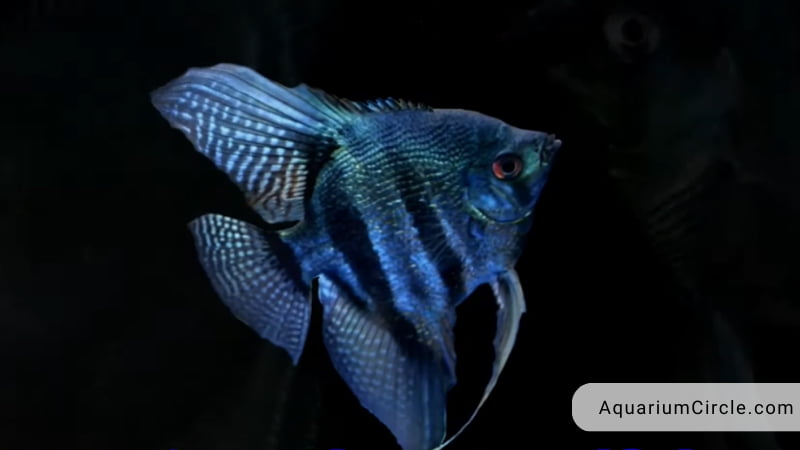
The Ghost Angelfish is a broader category that encompasses several different breeds, with the Grey Ghost Angelfish being the most popular and commonly found variety. This version of the Ghost Angelfish is plain grey in color, without any distinctive patterns on its body. However, some Grey Ghost Angelfish may develop stripes as they mature, although this is not always the case.
The Ghost Angelfish can be a great companion for other angelfish breeds, such as the Platinum, as they share a similar appearance and will not have any negative effects on each other.
Videos About Angelfish Types
FAQs
What is the ideal tank size for angelfish?
Angelfish require a minimum tank size of 30 gallons, with larger species such as Altum Angelfish requiring at least 50 gallons.
What water conditions do angelfish need?
Angelfish prefer warm water temperatures ranging between 75-84 degrees Fahrenheit and a slightly acidic pH level ranging from 6.0 to 7.0.
Can different angelfish breeds be kept together in the same tank?
Generally, angelfish can be kept together in the same tank, as long as they are of similar size and temperament. It is essential to provide ample space and hiding spots for each fish to reduce the risk of aggression.
What should I feed my angelfish?
Angelfish should be fed a varied diet of high-quality pellets, flakes, and frozen or live foods, including brine shrimp and bloodworms.
Are angelfish easy to care for?
Angelfish are relatively low-maintenance and easy to care for, making them a popular choice among aquarium enthusiasts. However, specific breeds may require more specialized care and attention.
References

Annette M. Chaney is an experienced marine biologist with over 20 years of experience as an aquarist and fishkeeper. She started her first aquarium at a young age, filling it with frogs and goldfish obtained from the ten-cent pet store.
Annette grew up caring for and breeding African Cichlids, which led to a hobby in high school that doubled as a profitable means. Attending Reed College gave her time to solidify herself as an accomplished aquarium caretaker with an eye for sales. After that, from 2009 – 2013, she studied at Roger Williams University – one of the most prestigious universities for Aquaculture and Aquarium in USA. She is the founder of AquariumCircle since 2010.
